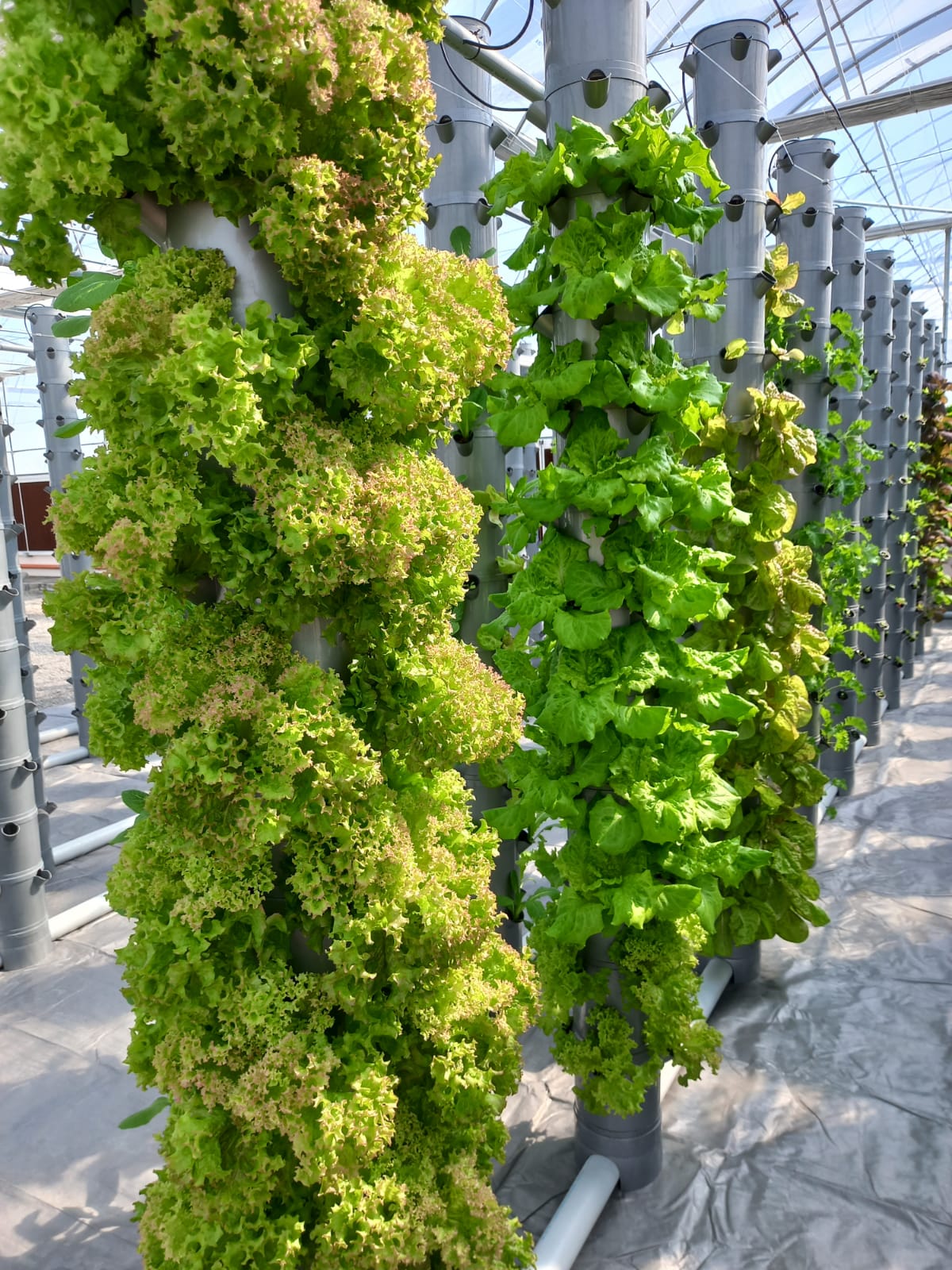11 Major Benefits of Vertical Aeroponic Farming.

Introduction: Vertical aeroponic farming, also known as vertical farming or aeroponics, is a cutting-edge method of cultivating plants in a vertical structure without soil, using nutrient-rich water. This innovative approach to agriculture is gaining popularity among farmers and plant enthusiasts due to its numerous benefits. In this blog, we will explore the top 11 major benefits of vertical aeroponic farming, and why it is an ideal solution for modern agriculture, particularly for companies like Radongrow that are looking to embrace sustainable and efficient farming practices.
-
Space Efficiency: One of the key advantages of vertical aeroponic farming is its space efficiency. 300% More Plants than NFT ( Nutrient Film Technique ) and 200% more Plants than A shape DFT (Deep Flow Technique ) By growing plants vertically, farmers can maximize the use of limited space, making it suitable for urban environments or areas with limited arable land. Vertical aeroponic farms can be set up in indoor spaces, warehouses, or even high-rise buildings, allowing for year-round production in areas where traditional farming may not be feasible.
-
Water Conservation: Water scarcity is a significant concern in modern agriculture. However, vertical aeroponic farming uses up to 95% less water compared to traditional soil-based farming. The nutrient-rich water is recirculated, reducing water wastage and making it an eco-friendly solution for water conservation. This makes it an ideal option for regions with limited water resources or areas facing water restrictions.
-
Reduced Pesticide Use: Vertical aeroponic farming minimizes the need for pesticides and herbicides. Since the plants are grown in a controlled environment, the risk of pests and diseases is significantly reduced. This reduces the reliance on chemical pesticides, making it a safer and healthier option for producing pesticide-free, high-quality crops.
-
Enhanced Crop Quality: Vertical aeroponic farming allows for precise control over the growing conditions, including light, temperature, humidity, and nutrient levels. This enables farmers to optimize the growth of plants, resulting in higher yields, better flavor, and improved nutritional value. The controlled environment also minimizes the risk of contamination from external sources, ensuring cleaner and safer crops.
-
Year-Round Production: Vertical aeroponic farming enables year-round production of crops, regardless of the external climate. The controlled environment allows for the cultivation of crops without being dependent on seasonal changes or weather conditions. This provides a reliable and consistent supply of fresh produce throughout the year, eliminating the limitations of traditional farming that are subject to weather fluctuations.
-
Increased Crop Yield: Vertical aeroponic farming can significantly increase crop yield compared to traditional farming methods. The vertical stacking of plants maximizes the use of space, and the precise control of growing conditions optimizes plant growth, resulting in higher yields per square foot. This can be especially beneficial for commercial farming operations, providing increased profitability and sustainability.
-
Energy Efficiency: Vertical aeroponic farming can also be energy efficient. LED lights can be used to provide optimal light conditions for plant growth, using less energy compared to traditional lighting systems. Additionally, the controlled environment allows for efficient use of resources, such as water and nutrients, further reducing energy consumption. This makes vertical aeroponic farming a sustainable and environmentally friendly option.
-
Reduced Carbon Footprint: Traditional farming methods often involve extensive transportation and storage of crops, resulting in a significant carbon footprint. Vertical aeroponic farming, on the other hand, can be located close to urban areas, reducing the need for long-distance transportation. Additionally, the controlled environment and reduced use of pesticides and herbicides contribute to lower emissions, making it a more sustainable option with a reduced carbon footprint.
-
Scalability: Vertical aeroponic farming is highly scalable, allowing farmers to expand or adjust their operations based on demand or available space. The modular design of vertical farms makes
-
Enhanced Plant Health: Vertical aeroponic farming provides optimal growing conditions for plants, resulting in healthier and stronger crops. The precise control over nutrient levels, pH, and growing conditions allows for optimal plant growth and development, minimizing the risk of diseases, pests, and other environmental stresses. Healthy plants are more resistant to diseases and pests, resulting in higher quality and more resilient crops.
-
Sustainable Agriculture: Vertical aeroponic farming is considered a sustainable agriculture method due to its efficient use of resources, reduced environmental impact, and year-round production capability. It minimizes the use of water, pesticides, and herbicides, reduces energy consumption, and lowers carbon footprint. Vertical aeroponic farming also eliminates the need for soil erosion and reduces the risk of contamination from external sources, making it a more environmentally friendly and sustainable option for agriculture.
Conclusion: Vertical aeroponic farming offers numerous benefits that make it a compelling option for modern agriculture. Its space efficiency, water conservation, reduced pesticide use, enhanced crop quality, year-round production capability, increased crop yield, energy efficiency, reduced carbon footprint, scalability, and sustainable practices make it an ideal solution for companies like Radongrow and other farmers who are looking for innovative and sustainable ways to cultivate crops. Embracing vertical aeroponic farming can lead to more efficient and sustainable agriculture practices, ensuring a reliable and environmentally friendly supply of fresh produce.
-
Posted in
Aerotower, Grow Tower, Radongrow, Vertical farmin, Vertical smart urban farming
